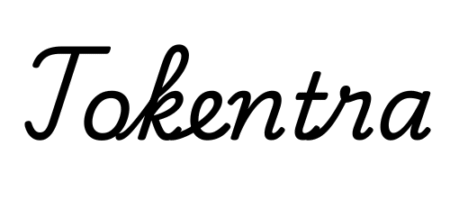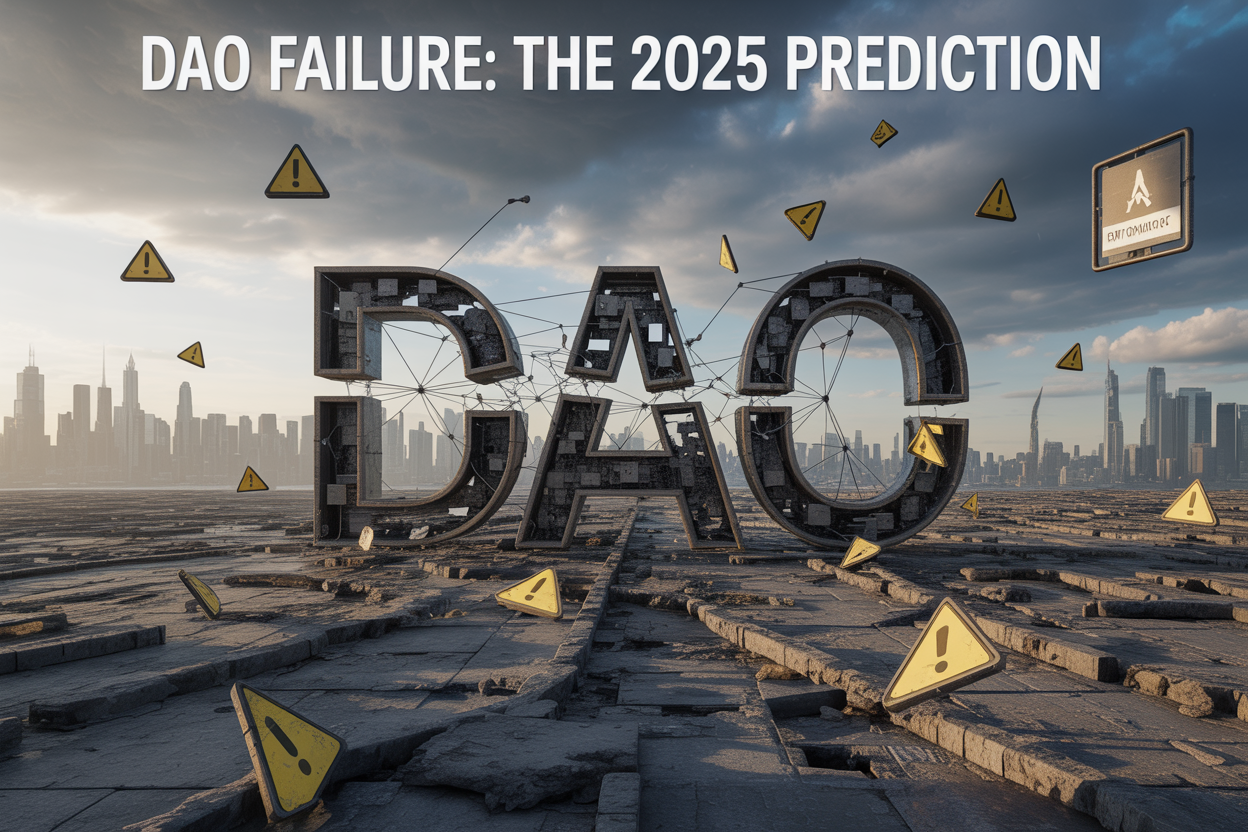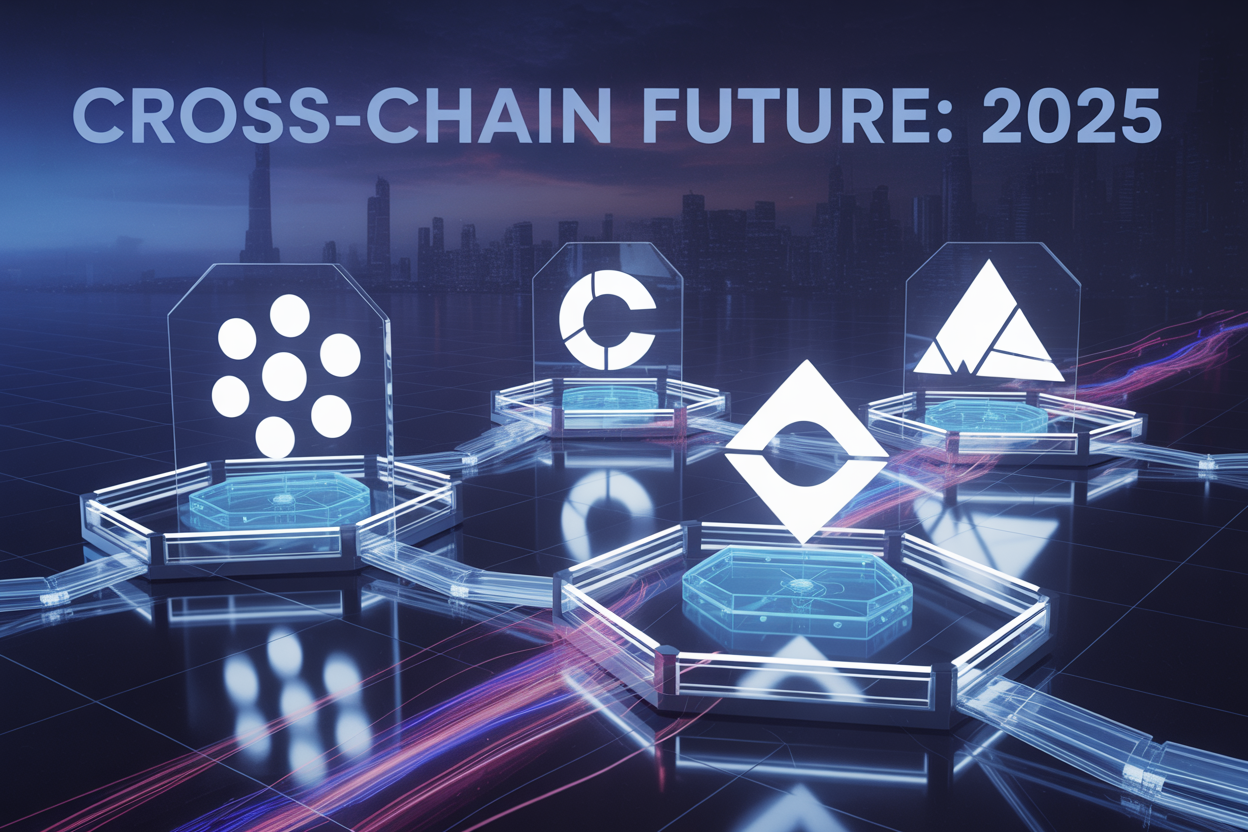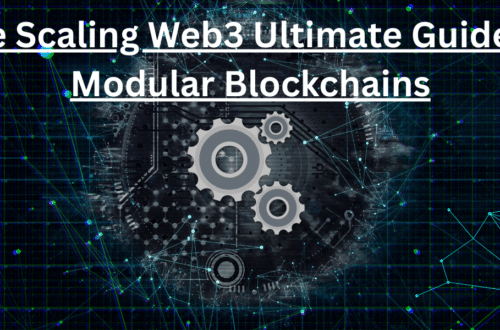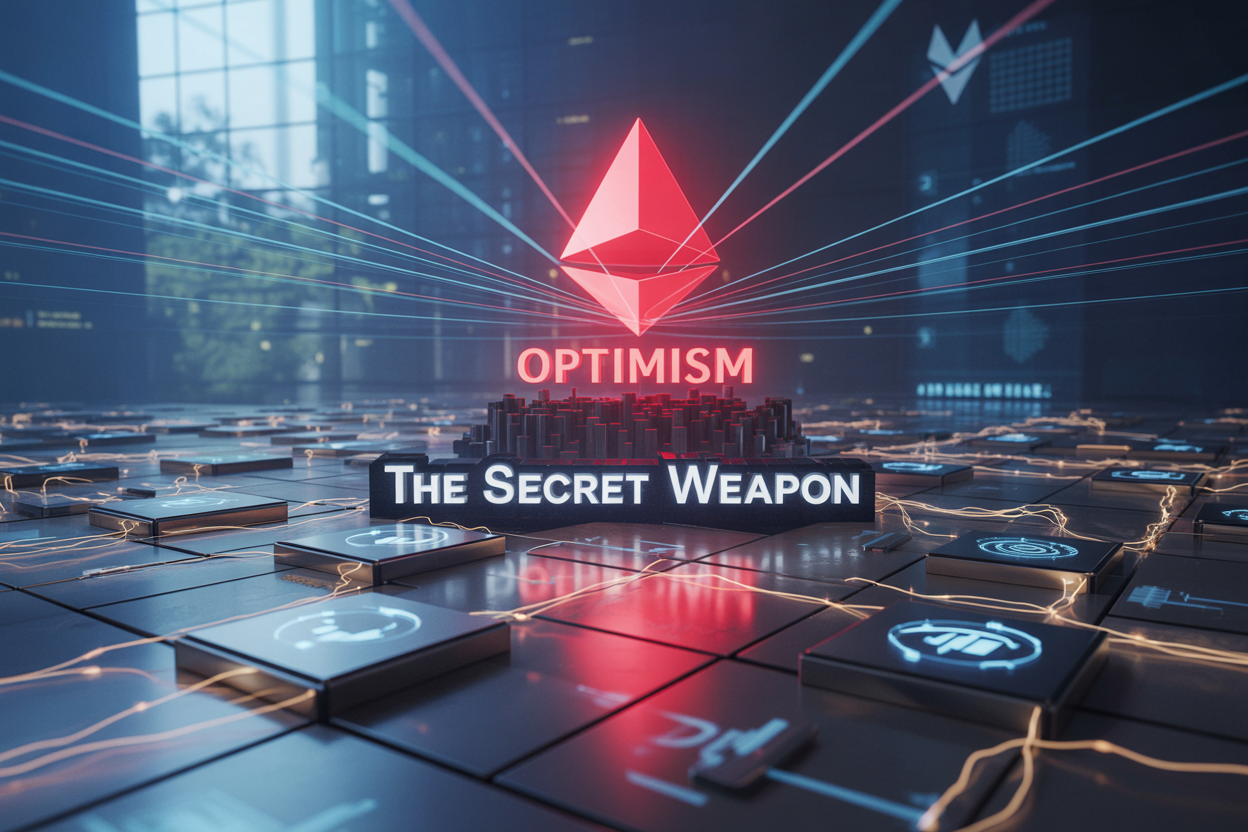Introduction
Decentralized Autonomous Organizations (DAOs) are booming in 2024, but major challenges threaten their future. This guide helps crypto founders, Web3 investors, and DAO contributors spot the warning signs before they invest time and money.
We’ll explore how governance systems can break down when too many voices lead to deadlock, why many DAOs face serious financial sustainability problems, and how incoming regulations could reshape the entire landscape.
The next 12 months will be make-or-break for DAOs. Let’s examine what could go wrong—and how to avoid these pitfalls.
Governance Paralysis: When Decentralization Becomes Dysfunction

A. The Problem of Voter Apathy in DAOs
We’ve all seen this movie before. A DAO launches with grand visions of collective decision-making, but six months in, only 3% of token holders are actually voting. Sound familiar?
Voter apathy isn’t just an annoying side effect – it’s potentially fatal. When nobody shows up to vote, what exactly is decentralized about your “decentralized autonomous organization”?
The numbers tell a brutal story. Most DAOs see participation rates below 10%. Some high-profile examples have dropped below 1% for non-financial votes. This isn’t democracy; it’s neglect.
Why don’t people vote? Three big reasons:
- Too much noise: Weekly proposals about minor protocol tweaks exhaust even dedicated community members
- Complexity overload: Understanding the implications of technical proposals requires expertise most token holders don’t have
- Low individual impact: If you own 0.01% of tokens, why spend hours researching when your vote barely matters?
B. Whale Dominance: How Wealth Concentration Undermines True Decentralization
The dirty secret of many DAOs? A handful of “whales” call all the shots.
When 5-10 addresses control over 70% of voting power, you don’t have decentralization – you have an oligarchy wearing a decentralization costume. These super-voters can simply coordinate off-chain and determine outcomes before voting even begins.
This concentration creates dangerous incentives. Whales often prioritize short-term token price over long-term sustainability. Why? Because they can dump their holdings before smaller holders even realize what’s happening.
Some DAOs try to limit this through quadratic voting or capped voting power, but these mechanisms bring their own problems – like encouraging whales to split their holdings across multiple wallets.
C. Decision Deadlock: When Consensus Mechanisms Fail
Picture this: Your DAO needs to make a critical pivot to survive. The proposal sits at 51% approval – just shy of your required 66% supermajority. Days pass. Weeks. Nothing changes.
This is decision deadlock, and it kills DAOs.
The cruel irony is that consensus mechanisms designed to protect against bad decisions end up preventing any decisions at all. The higher your threshold for passage, the more likely you end up paralyzed.
Governance mechanisms that work beautifully for stable conditions often break completely during crises – exactly when fast decisions matter most.
Some DAOs have tried implementing emergency powers for core teams, but this undermines the entire premise of decentralization. Others have reduced quorum requirements, but this circles back to our first problem: smaller groups making decisions for everyone.
The perfect governance system remains elusive, and this governance trilemma – balancing security, decentralization and efficiency – might be the biggest threat to DAOs going mainstream.
Financial Unsustainability: The Economic Challenges

A. Treasury Mismanagement and Depleting Funds
Money doesn’t grow on trees in DAOs either. Many organizations kick off with a fat treasury from token sales or donations, thinking it’ll last forever. Spoiler alert: it doesn’t.
The problem? DAOs often burn through cash like a teenager with their first credit card. Without proper financial controls, funds get allocated to pet projects that sound cool but deliver zilch. I’ve watched DAOs approve six-figure budgets for initiatives with no accountability measures whatsoever.
By 2025, we’ll see more DAOs hitting rock bottom because nobody wanted to be the grown-up who says “no” to spending.
B. Inability to Adapt to Market Downturns
Bull markets hide all sins. When tokens are mooning, nobody questions financial decisions. But what happens when winter comes?
Most DAOs have zero contingency plans for extended bear markets. Their treasuries are often held in their native tokens – absolute financial suicide when markets tank 80%. And changing course? Good luck getting consensus when everyone’s portfolio is bleeding.
The next crypto winter will wipe out DAOs that failed to diversify their holdings or create bear market playbooks.
C. Failed Revenue Models Beyond Token Appreciation
The dirty secret nobody talks about: most DAOs don’t have actual business models. They’re banking on token appreciation to keep the lights on.
Take a hard look at your favorite DAO. Ask yourself: “How does this actually make money?” Not token price going up – real revenue. For most, you’ll draw a blank.
Some DAOs try subscription models, service fees, or investments. But these revenue streams often generate pennies compared to operating costs. By 2025, the fantasy of “community value” paying the bills will crash into economic reality.
D. The Hidden Costs of Decentralized Operations
Decentralization isn’t just a philosophy – it’s expensive as hell.
Coordination costs in DAOs make traditional companies look efficient. Multiple rounds of voting, endless discussions, and consensus-building burn through resources. That’s before we even talk about the technical costs – multiple signatures for transactions, smart contract audits, and security measures.
What looks like “cutting out middlemen” actually creates dozens of micro-transactions and decision points. Each one costs time and money.
The hidden tax of decentralization will force DAOs to centralize key functions by 2025, or watch their runway disappear into the coordination abyss.
Regulatory Crackdowns: The Coming Legal Storm

A. Securities Law Violations: The SEC’s Perspective
The SEC isn’t playing games anymore with DAOs. They’re watching closely, and their stance is clear: if it walks like a security and talks like a security, they’re coming after you.
Most DAOs are built around tokens that give holders voting rights. Sound familiar? That’s because it mirrors traditional securities in many ways. The SEC has already shown their hand with enforcement actions against various crypto projects. DAOs are next in line.
Gary Gensler hasn’t been subtle. He’s repeatedly signaled that most crypto tokens fall under securities laws. DAOs handing out governance tokens in exchange for money or contributions? That’s practically begging for a subpoena.
B. KYC/AML Requirements vs. Pseudonymous Participation
The core appeal of DAOs—anonymous participation—is exactly what regulators hate.
Try squaring this circle: How do you maintain pseudonymous voting while complying with Know Your Customer requirements? You can’t. It’s oil and water.
Money laundering concerns are legitimate. A DAO with millions in treasury funds but zero identity verification is a compliance nightmare waiting to happen. Financial regulators worldwide won’t stand for it.
C. Cross-Border Regulatory Complications
DAOs don’t exist in one jurisdiction—that’s kind of the point. But this creates a regulatory mess.
Different countries have wildly different approaches:
| Country | Approach to DAOs |
|---|---|
| USA | Increasingly hostile, securities-focused |
| EU | MiCA regulations bringing strict compliance |
| Singapore | Cautiously supportive with oversight |
| Switzerland | Creating specific legal frameworks |
Your DAO might be compliant in Switzerland but illegal in the US. How do you block US participants without KYC? You probably can’t.
D. The Cost of Compliance vs. True Decentralization
Here’s the brutal truth—compliance costs a fortune. Legal counsel across multiple jurisdictions, ongoing regulatory monitoring, compliance officers, reporting systems.
For a truly decentralized organization? Nearly impossible to implement.
When DAOs start adding compliance layers, they start looking suspiciously like traditional organizations with extra steps. The more compliance you add, the less decentralized you become. It’s a death spiral.
E. Potential Legal Structures for Survival
Smart DAOs are already exploring these options:
- Legal wrappers – Foundation or LLC structures in crypto-friendly jurisdictions
- Hybrid models – Core legal entity with decentralized governance
- Jurisdiction shopping – Relocating to places like Wyoming with DAO-specific laws
- Tiered membership – Different access levels based on verification status
The best approach? Build with compliance in mind from day one. Retrofitting a non-compliant DAO is like trying to install seatbelts on a moving car—dangerous and probably too late.
Technical Vulnerabilities: The Overlooked Risks

Smart Contract Failures and Security Breaches
The code that powers DAOs is often treated like an infallible digital constitution. But that’s a dangerous assumption.
Smart contracts have bugs. They always have, and they always will. Just look at what happened with The DAO in 2016 – a $60 million hack that shook the entire Ethereum ecosystem. And that was just the beginning.
By 2025, as DAOs manage billions in assets, they’ll become even juicier targets. Hackers don’t need to rob a bank when they can exploit a single line of code and drain a treasury without leaving their bedroom.
The real kicker? Most DAOs still don’t have proper security audits. They’re running experimental code in production with real money at stake. That’s like testing a new plane design with passengers already on board.
Scalability Limitations Under Growing Demands
DAOs are cute when they’re small. Twenty people voting on proposals? No problem. But what happens when you have 20,000 members?
The on-chain voting mechanisms most DAOs rely on simply can’t handle the load. Gas fees skyrocket. Transactions get stuck. The whole system grinds to a halt.
I’ve watched governance forums turn into ghost towns because actually executing a vote costs more than most members are willing to pay. By 2025, this problem will reach a breaking point.
Some DAOs are already being forced to move critical functions off-chain, which defeats the whole purpose of decentralization. They’re becoming traditional organizations with extra steps.
Oracle Dependencies and Single Points of Failure
DAOs pretend they’ve eliminated trust issues, but they’ve just shifted the trust to oracles.
These external data feeds are the eyes and ears of DAOs, informing them about everything from token prices to real-world events. But they’re also massive single points of failure.
Oracle manipulation isn’t theoretical – it’s happening regularly. In 2025, as DAOs control more capital, we’ll see sophisticated attacks targeting these vulnerable information pipelines.
And it gets worse. Many DAOs rely on the same handful of oracle providers, creating systemic risk across the entire ecosystem. One compromised oracle could potentially bring down dozens of DAOs simultaneously.
The hard truth? Most DAOs aren’t actually decentralized where it matters most.
Cultural and Coordination Failures

A. Community Fragmentation and Fork Wars
Ever watched a close-knit group implode over a seemingly minor disagreement? That’s exactly what’s happening in DAOs right now.
The Ethereum/Ethereum Classic split was just the beginning. When communities disagree on fundamental direction, the “fork” option is always there, looming like a nuclear option. But here’s the kicker – the more valuable a DAO becomes, the more devastating these splits can be.
I’ve seen communities tear themselves apart over governance proposals that seemed trivial from the outside. One minute you’re unified by a shared mission, the next you’re choosing sides in a digital civil war.
The problem? Fork wars drain resources, splinter communities, and confuse the market. By 2025, I predict we’ll see major DAOs fragment into competing ecosystems, each claiming to be the “true” inheritor of the original vision.
B. The Challenge of Maintaining Core Values As DAOs Scale
Growing pains hit different in DAOs.
At 100 members, everyone knows the founding story and core values. At 10,000 members? Good luck.
The challenge isn’t just about communication – it’s about maintaining cultural integrity while scaling. Most DAOs start with idealistic visions about democratizing finance or governance, but those principles get diluted with each growth spurt.
Take a look at what happened with MakerDAO. Started with hard-core decentralization ethos, but as it grew, pragmatic concerns started outweighing ideological purity.
When new members join primarily for financial gain rather than mission alignment, the community’s DNA fundamentally changes. By 2025, I expect many DAOs will have evolved so far from their founding principles that early contributors won’t recognize them anymore.
C. Competing Incentives Between Token Holders and Contributors
The dirty secret of most DAOs? Token holders and active contributors often want completely different things.
Token holders typically push for actions that increase token value – sometimes at the expense of long-term sustainability. Meanwhile, contributors want fair compensation and meaningful work.
This tension creates a weird dynamic where the people doing the actual work have different priorities than the people with voting power. I’ve watched DAOs struggle with this fundamental misalignment for years.
Here’s a common scenario playing out across the ecosystem:
| Token Holders Want | Contributors Want |
|---|---|
| Token appreciation | Sustainable compensation |
| Short-term wins | Long-term vision |
| Minimal treasury spending | Adequate resources |
| Risk-taking | Stability and security |
By 2025, DAOs that haven’t solved this incentive mismatch will find themselves paralyzed by internal conflict.
D. The Paradox of Decentralized Leadership
Everyone wants decentralization until decisions need to be made quickly.
The paradox is real: DAOs need leadership to function efficiently, but traditional leadership models undermine the whole point of being decentralized.
I’ve observed this playing out in crisis moments. When quick action is needed, voting processes feel painfully slow. When charismatic figures step up to guide the community, concerns about centralization immediately follow.
Some DAOs try to solve this with “steward” models or rotating leadership, but these approaches bring their own complications. Accountability becomes diffused, and institutional knowledge gets lost in the shuffle.
The hard truth is that human organizations naturally gravitate toward leadership structures. By 2025, successful DAOs will have found their own unique balance between decentralized governance and effective leadership – but many won’t survive the growing pains of figuring it out.

The Pivotal Crossroads for DAOs
As we’ve explored, DAOs face critical challenges that could significantly impact their future. From governance mechanisms that risk deadlock to financial models that may prove unsustainable, these organizations stand at a precarious juncture. The looming regulatory uncertainties, technical vulnerabilities, and coordination challenges further compound these risks as we look toward 2025.
For DAOs to survive and thrive, they must evolve beyond their current limitations. This means developing adaptive governance structures, creating sustainable tokenomics, proactively addressing regulatory concerns, strengthening security measures, and fostering cohesive community cultures. The coming years will separate truly resilient DAOs from experimental concepts—those that can overcome these five potential points of failure will help shape the next generation of decentralized organization.
